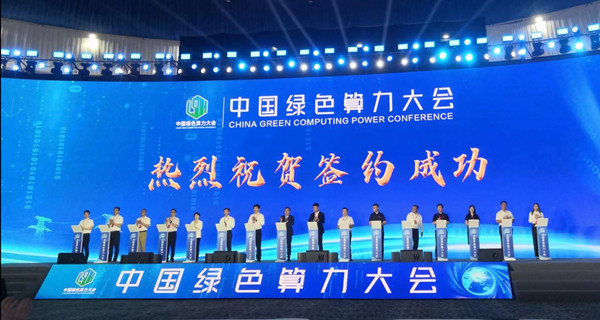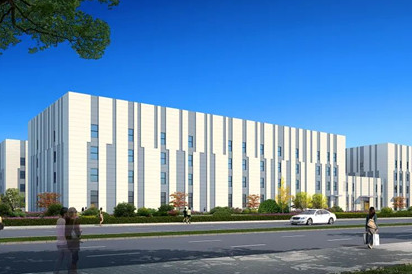Inner Mongolia ramps up green computing

The first China Green Computing Power Conference opens in Hohhot on July 2, 2024. [Photo provided to en.hhhtnews.com]
North China's Inner Mongolia autonomous region will fully leverage its environmental and natural resource advantages to accelerate the development of the green computing industry, aiming to become one of China's key computing power hubs, officials and experts said recently.
Wang Lixia, chairwoman of the autonomous region, said Inner Mongolia has cool weather with temperatures lower than the national average, which helps ensure the performance of computing devices. The region also boasts the largest wind and solar power installed capacity nationwide, which can supply abundant green electricity to energy-consuming computing devices.
The remarks were made at the 2024 China Green Computing Power Conference held on Saturday in Hohhot, Inner Mongolia.
At the conference, 13 projects were signed involving a total investment of 61.35 billion yuan ($8.4 billion). These projects cover upstream computing equipment manufacturing, midstream infrastructure construction, downstream computing applications as well as operational and maintenance services.
Several partnerships were also initiated at the conference including transferring computing workloads from Beijing to resource-rich Inner Mongolia. The conference also announced the setting up of a computing power resource management platform and a data trading center in Hohhot.
In recent years, Inner Mongolia has stepped up efforts for computing power development. In June, it rolled out 16 supportive measures, covering optimizing industrial layout, strengthening electricity supply, expanding application scenarios and cultivating talent.
Such efforts have borne fruit. As one of the 10 data center clusters in the national "east data, west computing" initiative — a move launched to optimize the layout of computing infrastructure and to enhance overall supply capabilities — the Horinger Green Computing Power Development Research Center, which was unveiled at the first China Green Computing Power Conference, currently has a server installation capacity exceeding 3.7 million units.
Its total computing power has reached 47,000 petaFLOPS, with intelligent computing power accounting for 41,000 petaFLOPS, ranking among the top nationwide. By the end of this year, the center's server installation capacity is expected to surpass 4 million units, with a total computing power reaching 65,000 petaFLOPS, including 58,000 petaFLOPS of intelligent computing power.
Inner Mongolia is a microcosm of the rapid development of China's computing power industry. By the end of 2023, China's total computing power capability had reached 230 EFLOPS, with intelligent computing power reaching 70 EFLOPS, growing at an annual rate of over 70 percent, thus strongly supporting the development of the artificial intelligence industry, said the Ministry of Industry and Information Technology.
Meanwhile, China is accelerating the construction of a nationwide integrated computing power system, facilitating the rapid flow of data elements. The country has launched the "east data, west computing" initiative to build data center clusters in less developed western regions and transfer workloads there from the more developed eastern regions that boast high demand for computing power.
Li Donghong, deputy director of the Institute for Global Industry at Tsinghua University, said that computing power is a high energy-consuming sector and called for the promotion of emerging energy-saving products and efforts to enhance energy efficiency and increase the proportion of green energy use.








